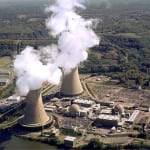At least three states called for hefty new measures relating to greenhouse gas (GHG) goals over the past week.
Mass. Gov. Directs State Officials to Implement Regulations to Annually Reduce GHG
Massachusetts Gov. Charlie Baker (R) signed an executive order on September 16 directing state officials to develop rules for specific, yearly reductions in GHG emissions by August 2017.
The state’s GHG emissions limit for 2020 is 25% below the 1990 level of emissions and the corresponding limit for 2050 is 80% below the 1990 level of emissions. However, no interim limits have yet been set for 2030 or 2040.
The executive order responds to a May 17 ruling by the Massachusetts Supreme Judicial Court, which says the state has not done enough to meet its obligations under its 2008 Global Warming Solutions Act. The court specifically called on the Department of Environmental Protection to issue rules “that establish volumetric limits on multiple greenhouse gas emissions sources, expressed in carbon dioxide equivalents, and that such limits must decline on an annual basis.”
Significantly, the order also requires the secretary of Energy and Environmental Affairs and the secretary of Public Safety to boost efforts that strengthen the resilience of its communities, prepare for the impacts of climate change, and prepare for and mitigate damage from extreme weather events.
Massachusetts has been stricken by drought for five consecutive months. The abnormally, extremely dry conditions have affected its agricultural industry and other crucial economic sectors.
How the drought has affected power plants in the state is unclear. According to the New England Power Generator Association (NEPGA), whose members own about 92% of the state’s power capacity (12 GW), Massachusetts represents nearly 46% of the region’s electricity consumption. Nearly all is met through competitive generation.
In June 2016, 75% of the state’s power came from natural gas, 15% from nuclear, about 4% from coal, and 6% from renewables.
Last month, Baker signed an omnibus energy bill that sets down an energy storage mandate and requires utilities to solicit contracts for 1.6 GW of offshore wind.
The law also outlines clean energy procurement targets, including for 1.2 GW from hydro, onshore wind, and other renewables from within the state, from neighboring states, or from Canada.
But according to NEPGA President Dan Dolan, the law will be detrimental to power generators in the state. “Power plant owners in Massachusetts will now be barred from competing for nearly 60% of the Commonwealth’s electricity market. Instead, consumers will be forced to pay for huge amounts of power at above-market prices, eliminating opportunities for innovation and cost containment,” he said.
“More can and should be done to lower carbon dioxide emissions. This plan, may be the most expensive way to get there I’ve seen.”
New York Releases Offshore Wind Blueprint
New York Gov. Andrew Cuomo (D) on September 15 released a strategic plan to advance the development of offshore wind along New York’s coastline.
The state offshore wind blueprint is designed to contribute to the governor’s mandate to get 50% of the state’s power from renewables by 2030. It essentially creates a framework for the development of offshore wind resources and identifies wind energy areas. These areas will be reviewed with respect to grid interconnection, costs, and benefits they may bring to New York, the governor’s office said in a statement.
All of these options will be included in the final “Offshore Wind Master Plan,” expected at the end of 2017.
The New York State Energy Research and Development Authority (NYSERDA) in June announced intentions to participate in the Department of the Interior’s Bureau of Ocean Energy Management (BOEM) auction for an 81,000-acre wind energy area located 12 miles off the Long Island coast. NYSERDA will become the nation’s first state entity to participate in a BOEM auction.
California Enacts Black Carbon, Methane Emission Reductions
Just weeks after California Gov. Jerry Brown (D) enacted a new climate change bill that would require the state to slash its GHG emissions by at least 40% from 1990 levels, by 2030, he signed into law new standards for black carbon and methane.
Brown signed the bill (SB 1383) on September 19. It will require a 50% reduction in black carbon and 40% reductions in methane and hydrofluorocarbons from 2013 levels by 2030.
The so-called “super pollutants”—also known as short-lived climate pollutants—are generated mostly by petroleum-based transportation fuels, agriculture, waste disposal, and synthetic gases used in refrigeration, air conditioning, and aerosol products.
“Removing one ton of diesel black carbon from the atmosphere, for example, is equivalent to removing 1,000 to 2,000 tons of carbon dioxide pollution. Worldwide, methane emissions alone are responsible for approximately 20 percent of current global warming,” the governor’s office said in a statement.
—Sonal Patel, associate editor (@POWERmagazine, @sonalcpatel)










